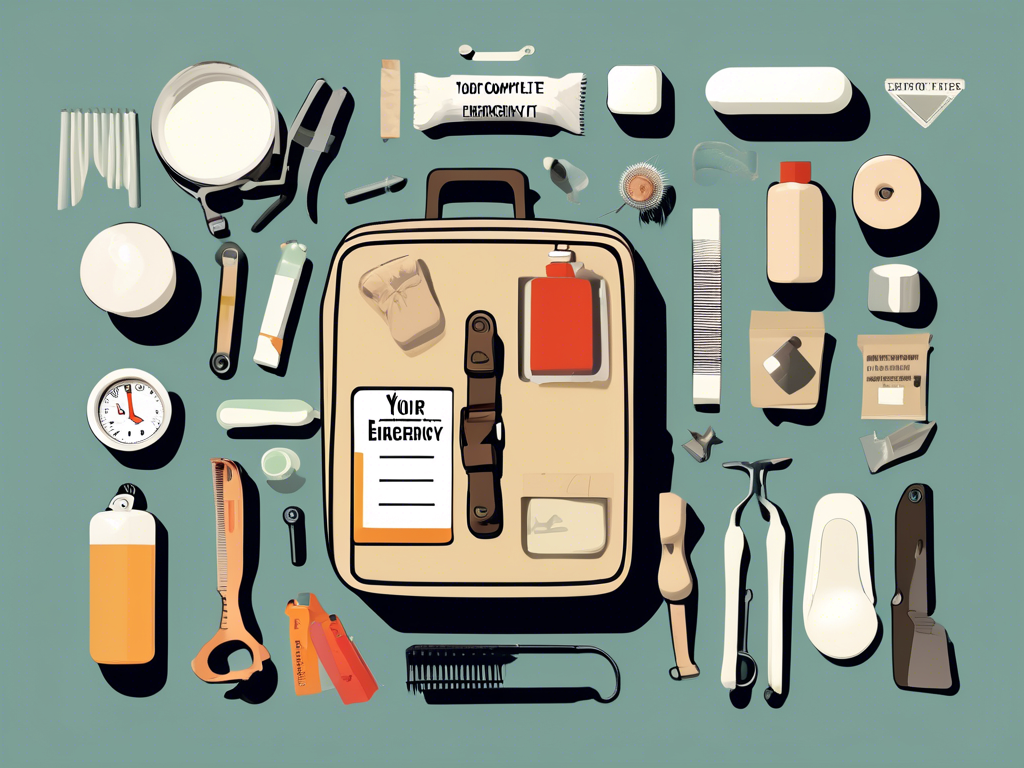In an unpredictable world where natural disasters, pandemics, and emergencies can strike without warning, being prepared is no longer just a wise choice; it’s a necessity. One critical aspect of disaster readiness that often goes overlooked is maintaining a well-equipped emergency hygiene kit. Unlike traditional survival gear, a hygiene kit focuses specifically on your health and sanitation needs during crises, ensuring that you and your family can remain safe and clean.
This emergency hygiene kit list is designed to guide you through the essentials necessary for maintaining personal hygiene during challenging times. From basic necessities like soap and hand sanitizer to more specialized items such as menstrual products and first aid supplies, a comprehensive hygiene kit can make a significant difference in your comfort and wellbeing.
As we navigate this article, we will explore why every household should prioritize creating their own emergency hygiene kit, delve into the top must-have components, and discuss common pitfalls to avoid when assembling your supplies. By the end, you will be equipped not only with a thorough understanding of what to include but also with a practical checklist to ensure that you’re always prepared for the unexpected.
Essential Items for Your Emergency Hygiene Kit: A Comprehensive Guide

Personal Care Essentials
When assembling your emergency hygiene kit, starting with personal care essentials is crucial. This includes items like toothbrushes, toothpaste, and biodegradable soap. These products help maintain oral health and hygiene, which are vital during emergencies. Don’t forget to add feminine hygiene products, as they are essential for women’s health and comfort. Consider including deodorant and wipes to keep fresh when access to water may be limited. 🪥🧼
First Aid Supplies
Another critical element of your emergency hygiene kit list is first aid supplies. This should incorporate adhesive bandages, antiseptic wipes, gauze pads, and medical tape. Having these items can assist in treating minor injuries or cuts when medical help is unavailable. Additionally, including antiseptic cream or ointment can prevent infections and promote faster healing. 🩹🚑
Sanitation Products
To ensure proper sanitation during emergencies, include items like hand sanitizer, disinfectant wipes, and toilet paper in your emergency hygiene kit. These products will help reduce the risk of germs and keep your living area clean. If you anticipate being without running water, consider adding portable toilet solutions or bags that can be used discreetly. Remember, cleanliness can make a significant difference in maintaining good health. 🚽✨
Clothing and Shelter Items
While not traditional hygiene items, clothing and shelter supplies play a crucial role in overall hygiene during emergencies. Including items such as extra clothing, blankets, and tarps in your emergency hygiene kit list can help you stay warm and dry, reducing the likelihood of illness. Moreover, avoid cotton if possible; instead, opt for moisture-wicking fabrics that allow your skin to breathe. 🧣🏕️
Storage Solutions
Finally, don’t overlook the importance of proper storage for your emergency hygiene kit. Invest in waterproof bags or containers to keep your items protected from moisture and dirt. Organize your supplies so you can access them easily during an emergency. Consider labeling sections or bags for quick identification, ensuring that you have everything you need at your fingertips. 🧳🔒
Top 10 Must-Have Components in Your Emergency Hygiene Kit List
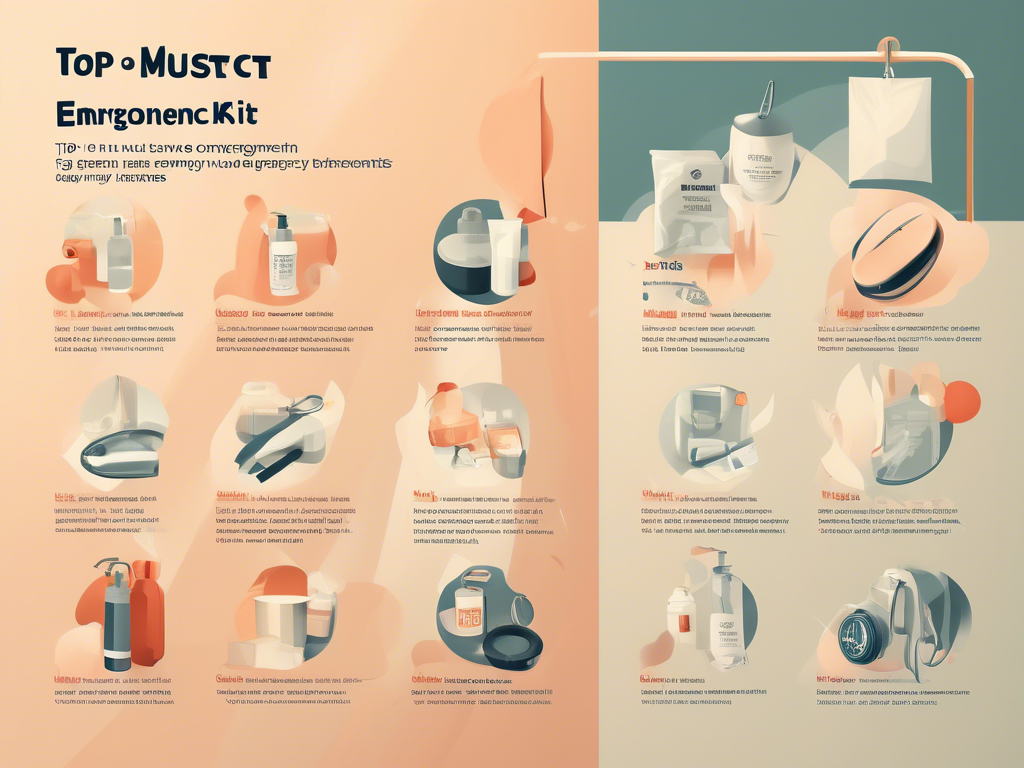
Water Purification Supplies
One of the most critical components of your emergency hygiene kit is water purification supplies. During an emergency, access to clean water may be compromised. Including items like water purification tablets or a portable water filter can ensure that you have access to safe drinking water, which is essential for maintaining good health and hygiene. 💧🧪
Biodegradable Waste Bags
Managing waste is an often-overlooked aspect of hygiene during emergencies. Adding biodegradable waste bags to your emergency hygiene kit list allows for safe disposal of trash and human waste, helping to minimize contamination. These bags are eco-friendly and practical, making them an excellent addition to maintain sanitation in challenging conditions. 🚮🌍
Handwashing Supplies
Keeping your hands clean is vital for preventing the spread of germs. Including travel-sized bottles of liquid soap and hand sanitizer in your emergency hygiene kit will enable you to practice proper hand hygiene. Ideally, choose anti-bacterial soap and ensure you have enough supplies for frequent use, especially if soap and water are not readily available. 🧴👐
Women’s Health Products
For women, including menstrual hygiene products in your emergency hygiene kit list is essential. Pack an adequate supply of sanitary pads, tampons, or menstrual cups to ensure comfort and health during emergencies. By prioritizing these items, you create a more comprehensive preparedness plan that addresses all aspects of hygiene. 🌸💖
Basic Hygiene Items
Don’t forget basic hygiene items such as razors, combs, and nail clippers for personal grooming. These items may seem trivial, but maintaining your appearance can boost morale in stressful situations. Moreover, keeping up with grooming habits can also help prevent skin infections and other hygiene-related issues. ✂️💇♂️
Emergency Contact and Medical Records
Lastly, organizing emergency contact information and important medical records is key to your emergency hygiene kit. Include copies of insurance cards, medication lists, and any medical history relevant to your care. Having this information readily available can be invaluable in case of emergencies, aiding quick access to necessary medical services. 📄📞
Why Every Household Needs an Emergency Hygiene Kit: Key Benefits Explained

Health Protection in Crisis Situations
One of the primary reasons every household should have an emergency hygiene kit is to protect health during crises. Emergencies, such as natural disasters or pandemics, can limit access to essential services, including healthcare. With a well-prepared kit, you can maintain hygiene standards, preventing illness and infection. Essential items like hand sanitizers, wipes, and first aid supplies allow your family to stay clean and healthy even when traditional resources are unavailable. 🏥🧴
Peace of Mind for Families
Having a comprehensive emergency hygiene kit list brings peace of mind to families. Knowing that you have the necessary supplies to manage hygiene during emergencies reduces anxiety and helps you feel more prepared to face unexpected situations. This level of preparedness allows everyone in your household to focus on safety and security rather than worry about what they might need. 🕊️🌈
Sustained Morale During Stressful Times
Maintaining personal hygiene greatly contributes to morale in stressful situations. When individuals feel clean and cared for, it boosts their spirit and resilience. An emergency hygiene kit ensures access to grooming items such as toothbrushes, deodorant, and soap, which can help normalize routines amid chaos. A small act like brushing your teeth or washing your face can have significant psychological benefits. ✨😊
Efficient Waste Management
Another crucial benefit of having an emergency hygiene kit is efficient waste management. In emergencies, regular waste disposal may become problematic. By including biodegradable waste bags and portable toilet solutions in your emergency hygiene kit list, you can minimize contamination risks and maintain sanitation. This not only protects health but also promotes environmental responsibility even in challenging circumstances. 🚮🌿
Community Preparedness and Safety
An emergency hygiene kit serves not just individual households but the community as well. By being prepared, families can assist others in need, whether by sharing supplies or offering support. Community resilience often hinges on individual readiness; thus, your kit can contribute to a safer environment for all. Encourage neighbors to create their own kits, fostering a sense of shared responsibility and cooperation. 🤝🏡
How to Assemble the Perfect Emergency Hygiene Kit for Any Crisis
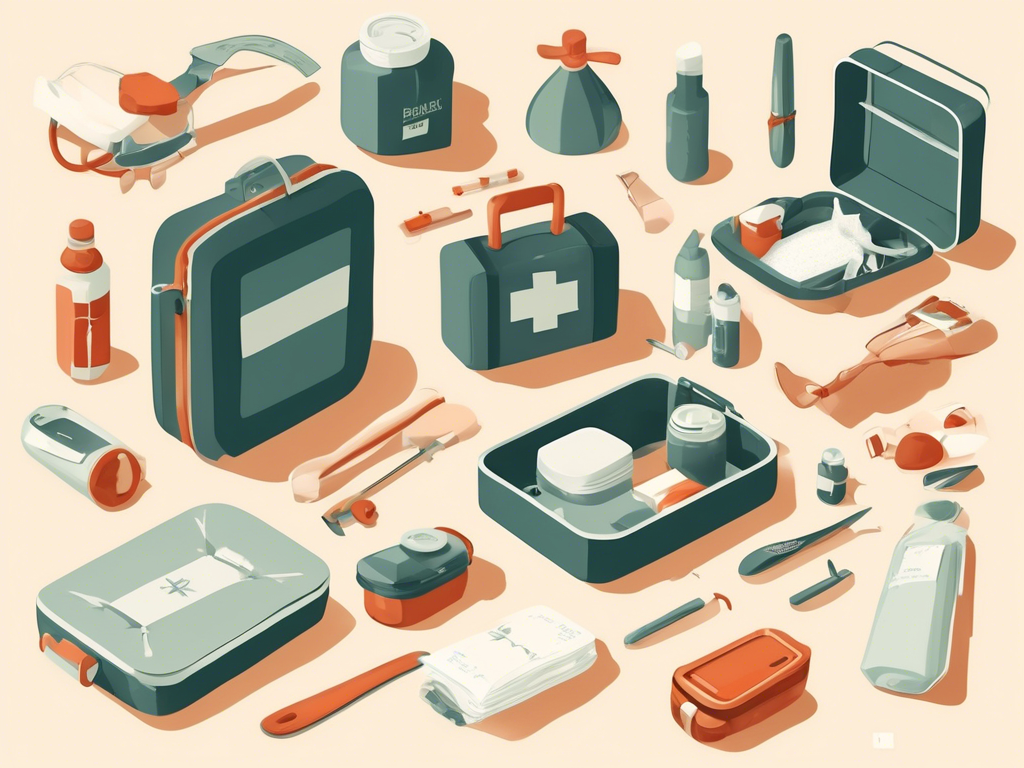
Understanding the Essentials
When creating the perfect emergency hygiene kit, it’s critical to understand what essentials you need. Start by making a comprehensive emergency hygiene kit list that includes personal care items, first aid supplies, and sanitation products. Think about what you’ll need not just for yourself but also for family members, including children and individuals with special requirements. Tailor your kit to meet diverse needs while ensuring all items are compact and easy to carry. 📦✅
Choosing the Right Container
A durable, waterproof container is vital for storing your emergency hygiene kit. Consider using a backpack or a sturdy plastic tub that can withstand harsh conditions. It should be large enough to fit all the necessary items without being too cumbersome. Labeling sections within the container will help you quickly locate supplies in an emergency, ensuring efficiency when you need it most. 🧳🔍
Regularly Updating Your Kit
To keep your emergency hygiene kit functional, it’s crucial to review and update it regularly. Check expiration dates on items such as medications and sanitary supplies every six months. Replace any used items and ensure that everything is in good condition. By maintaining your kit, you guarantee that you’re always prepared for unforeseen circumstances without the stress of dealing with outdated supplies. 🔄🗓️
Educating Your Family
Once your emergency hygiene kit list is complete, educate your family about its contents and how to use each item. Conduct drills or discussions about what to do in various crisis scenarios. Knowing where the kit is stored and how to access it can significantly enhance your overall preparedness, making the entire family more resilient during emergencies. 📚👨👩👧
Practice Makes Perfect
Finally, don’t just assemble your emergency hygiene kit; practice using it! Familiarize yourself and your family with the different items and their purposes. Set aside time to simulate a real-life situation where you might need to rely on your kit. This practice helps everyone feel confident and capable, ensuring that you can effectively address hygiene needs during a crisis. 🌟🛠️
The Ultimate Emergency Hygiene Kit Checklist: Don’t Forget These Essentials

Critical First-Aid Items
Don’t overlook the importance of first-aid supplies in your emergency hygiene kit. Essential items include adhesive bandages, antiseptic wipes, gauze pads, and medical tape. These supplies are crucial for treating minor injuries and preventing infections when healthcare access is limited. Additionally, consider packing some over-the-counter medications like pain relievers and antihistamines to address common health issues that may arise during emergencies. 🚑🩹
Sanitation and Cleaning Supplies
Sanitation is vital during any emergency, so ensure your emergency hygiene kit list includes sanitation products. Key items include hand sanitizer, disinfectant wipes, and toilet paper. These will help maintain cleanliness and reduce the risk of illness. If your situation might extend over a longer period, consider adding biodegradable waste bags to manage waste efficiently, protecting both your health and the environment. 🚽🌍
Water and Food Safety Tools
In emergencies, access to clean water is often compromised. Make sure to include water purification tablets or a portable water filter in your emergency hygiene kit. These tools are critical for ensuring safe drinking water. Furthermore, including non-perishable food items alongside hygiene essentials can help sustain your energy levels while managing hygiene needs effectively. 💧🍫
Personal Grooming Supplies
Maintaining personal hygiene helps sustain morale during stressful situations. Your emergency hygiene kit list should include grooming essentials such as a toothbrush, toothpaste, razors, and deodorant. These items may seem trivial but can significantly boost spirits when normalcy feels disrupted. Additionally, consider adding hair ties or brushes to keep yourself looking presentable. ✂️🪥
Emergency Contact and Medical History Documentation
Lastly, safeguarding important information is paramount. Add copies of emergency contact information and essential medical records to your emergency hygiene kit. Include insurance cards, medication lists, and details of any allergies or chronic conditions. This documentation will be invaluable in securing timely medical assistance during emergencies. 📄📞
Preparing for the Unexpected: The Importance of a Well-Stocked Emergency Hygiene Kit
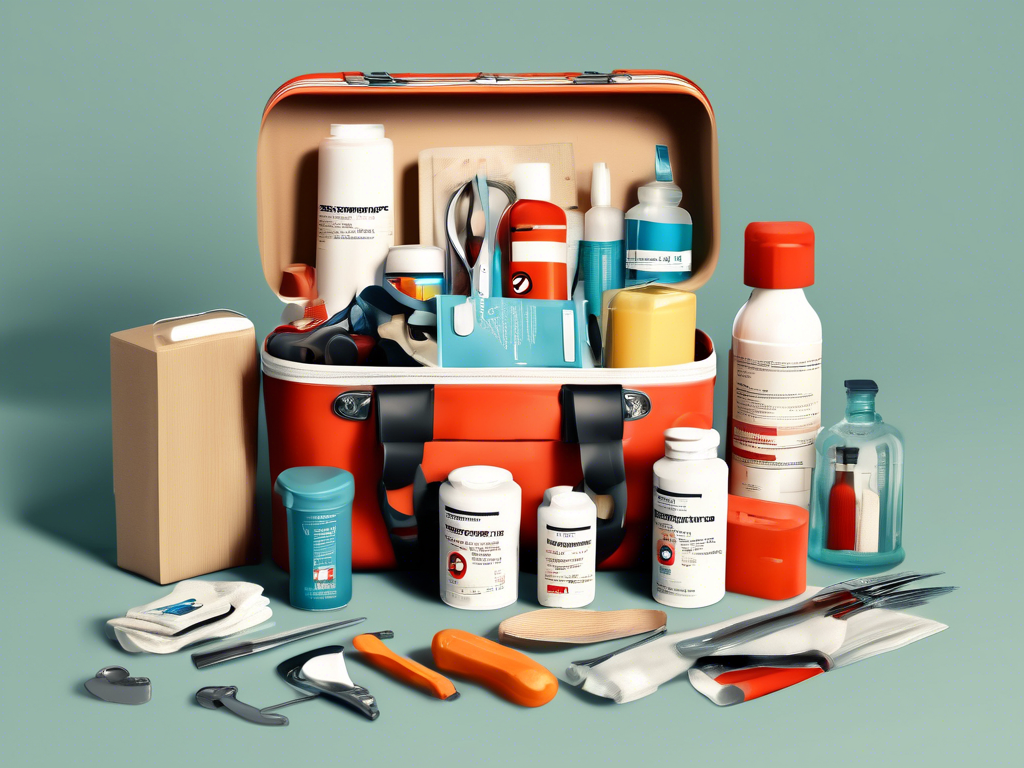
The Unpredictability of Emergencies
Emergencies can strike at any moment, whether it’s a natural disaster, health crisis, or another unforeseen event. This is why having a well-stocked emergency hygiene kit is essential. Being prepared not only helps ensure your health and safety but also provides peace of mind amid chaos. A comprehensive emergency hygiene kit list enables individuals to maintain proper hygiene standards when access to basic services may be limited. 🌀🏥
Key Components of an Emergency Hygiene Kit
To effectively prepare for the unexpected, it’s crucial to include a variety of items in your emergency hygiene kit. Here are some key components that should never be overlooked:
– **Personal Care Products**: Toothbrushes, toothpaste, biodegradable soap, and deodorant.
– **First Aid Supplies**: Adhesive bandages, antiseptic wipes, and gauze pads.
– **Sanitation Items**: Hand sanitizer, disinfectant wipes, and toilet paper.
– **Waste Management**: Biodegradable waste bags for safe disposal.
Including these essential items will help you maintain personal hygiene and prevent illness during emergencies. 🌿🧼
Accessibility and Organization
Organizing your emergency hygiene kit list is key to ensuring you can quickly access necessary items during a crisis. Store your supplies in a durable, waterproof container, and categorize items for easy retrieval. For example, keep personal care products together and first aid supplies in another section. Label each category clearly to save time when searching for specific items, especially under stress. 🚪🔒
Regularly Review and Update Your Kit
It’s important to periodically review your emergency hygiene kit. Check expiration dates on perishables like medications and toiletries at least every six months. Replace any used or outdated items to ensure that your kit is always ready for action. Regular maintenance not only keeps your kit functional but also instills confidence in your preparedness for any situation that may arise. 🔄🗓️
Education and Family Involvement
Involve your family in preparing for the unexpected by educating them about the contents and uses of the emergency hygiene kit. Conduct family drills or discussions outlining procedures for various emergency scenarios. This education fosters a sense of collective responsibility and ensures everyone knows how to utilize the kit effectively when needed. Together, you can create a more resilient household ready to tackle unforeseen challenges. 📚👨👩👧👦
Emergency Hygiene Kit: Tailoring Your Supplies to Fit Your Family’s Needs
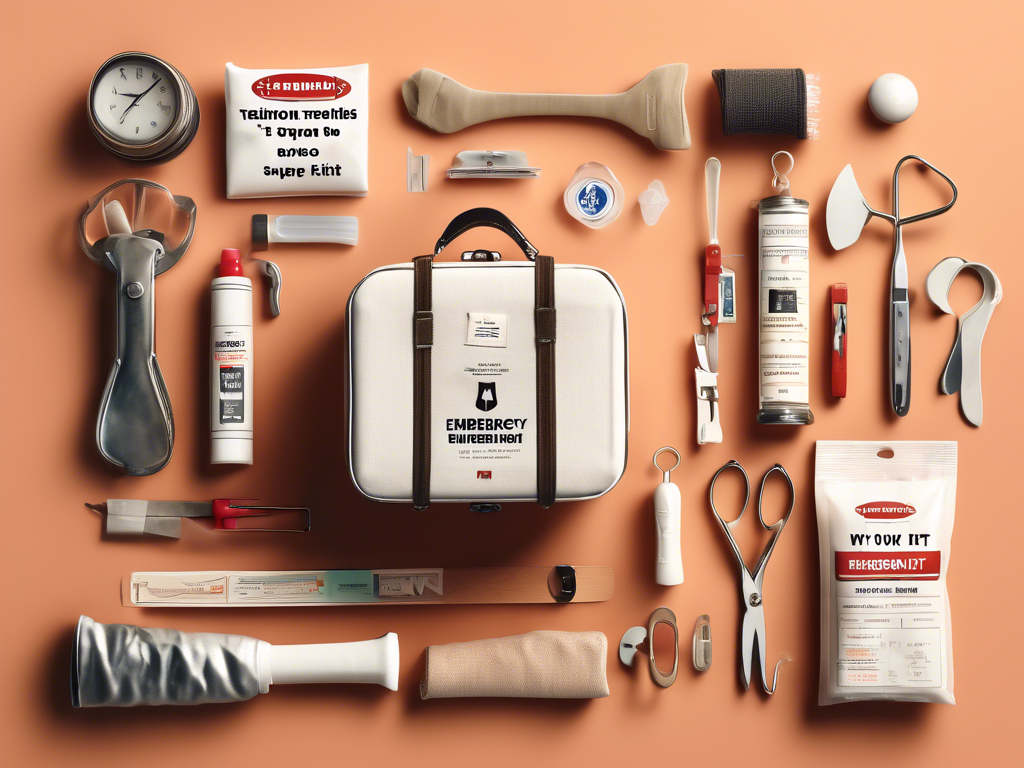
Understanding Family Dynamics
When preparing your emergency hygiene kit, it’s essential to consider the unique needs of each family member. Every individual has different requirements based on age, health conditions, and personal preferences. For instance, infants may need baby wipes, formula, or diaper supplies, while teenagers might require specific hygiene products. Take the time to assess the makeup of your household to create a comprehensive emergency hygiene kit list that serves all individuals effectively. 👨👩👦
Assessing Special Health Needs
Certain family members may have special health needs that must be addressed in your emergency hygiene kit. If anyone in your household has allergies or chronic conditions, include necessary medications and medical supplies. This might involve packing additional items like EpiPens, inhalers, or specific skin care products for sensitive skin. Having these tailored supplies readily available ensures you can manage health issues effectively during an emergency. 🏥💊
Age-Appropriate Hygiene Products
Different age groups require varying hygiene products to maintain their comfort and health. For young children, consider adding fun, kid-friendly items like flavored toothpaste and colorful toothbrushes to encourage good habits. For adults, including essential grooming tools such as razors, deodorant, and skincare products is crucial. By incorporating age-appropriate items, your emergency hygiene kit list becomes not only functional but also engaging for every family member. 🧴👶
Planning for Pets
Don’t forget about furry family members when creating your emergency hygiene kit. Include supplies such as pet food, collapsible water bowls, and waste bags. If your pets require any medications, ensure you pack them as well. Incorporating your pets’ necessities will help reduce stress during emergencies and keep your beloved animals safe and comfortable. 🐾🐶
Creating a Family Communication Plan
In addition to the physical supplies, it’s important to prepare your family with a communication plan related to your emergency hygiene kit. Make sure everyone knows where the kit is stored and how to access it during a crisis. Regular family discussions about the contents and their uses will ensure everyone is informed and prepared. This proactive approach enhances your family’s resilience and readiness for any emergency situation. 📞🗣️
Common Mistakes to Avoid When Creating Your Emergency Hygiene Kit List
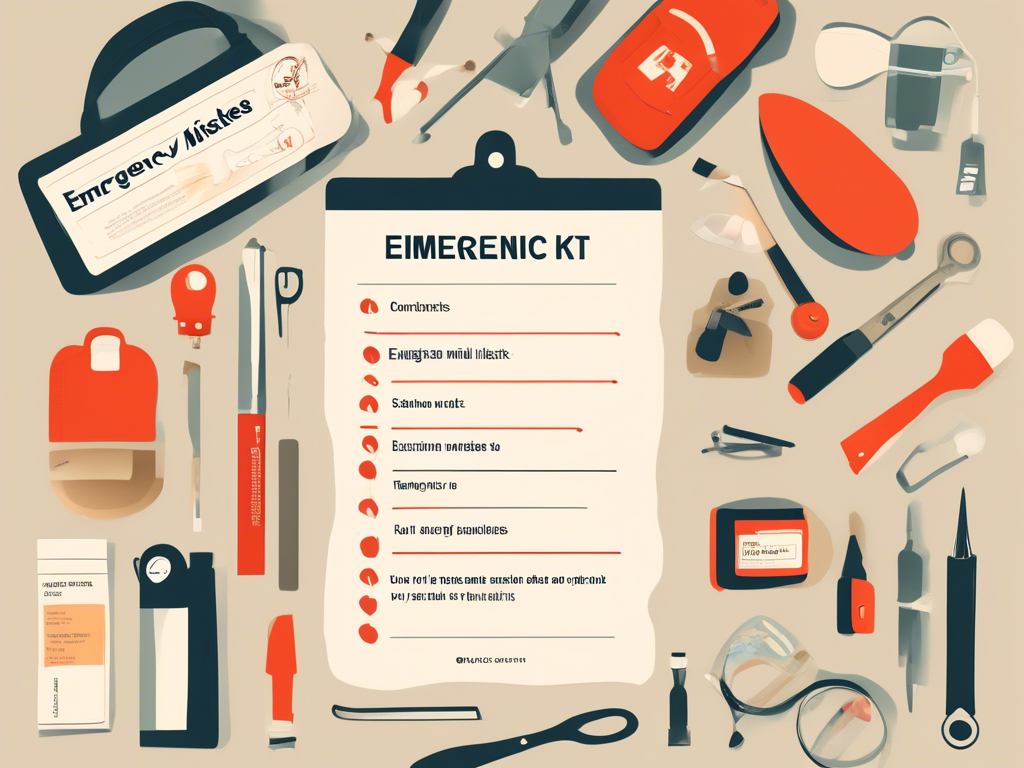
Neglecting Personal Hygiene Preferences
One common mistake when assembling your emergency hygiene kit is failing to consider personal hygiene preferences. Each family member may have specific products they prefer, whether it’s a particular brand of deodorant or a favorite toothpaste flavor. Ignoring these preferences can lead to discomfort during stressful situations. Ensure your emergency hygiene kit list includes items that cater to everyone’s needs while maintaining their comfort and morale. 🧴😊
Overpacking Non-Essential Items
It’s easy to overpack your emergency hygiene kit with non-essential items, which can make it cumbersome. While it’s essential to be prepared, sticking strictly to vital items will save space and reduce weight. Focus on necessary products like first aid supplies, sanitation items, and personal care essentials. Avoid unnecessary gadgets or luxury items that won’t significantly contribute to health and hygiene during an emergency. 📦❌
Ignoring Storage Conditions
Another mistake is overlooking the conditions under which your emergency hygiene kit will be stored. If your kit is kept in a damp area, you risk damaging items like wet wipes or medications. Choose a waterproof container and store it in a cool, dry place. Regularly inspect your supplies to ensure nothing has been compromised, as proper storage is essential for the longevity of your items. 🌧️🔒
Failing to Update the Kit Regularly
Many people create an emergency hygiene kit list but forget to update it regularly. Check for expired items like medications or perishable hygiene products every six months. Replenish used supplies and replace outdated items to ensure your kit is always ready for any situation. Failing to maintain this can leave you unprepared when emergencies arise. 🔄🗓️
Not Practicing Access and Usage
Lastly, assembling a kit without practicing access and usage is a critical oversight. Make sure all family members know where the emergency hygiene kit is located and understand how to use the items inside. Conduct family drills or discussions to familiarize everyone with the contents and their applications. This preparation enhances confidence and efficiency in real emergency scenarios. 🏃♂️🗣️
Stay Safe and Clean: Tips for Maintaining Your Emergency Hygiene Kit
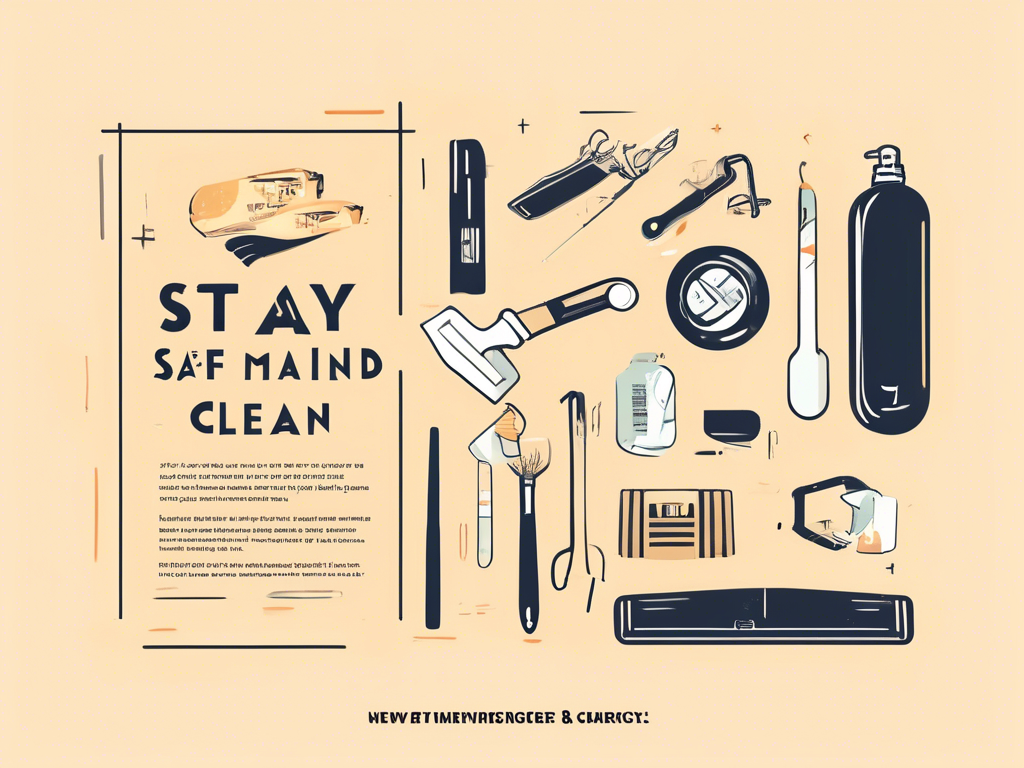
Regular Inspections
To ensure that your emergency hygiene kit is always ready for use, conduct regular inspections every few months. Check the expiration dates on items such as medications, sanitary products, and personal care items. Remove any expired supplies and replace them with fresh ones to maintain a functional emergency hygiene kit list. This proactive approach guarantees that you have the necessary items available when emergencies arise. 🔍🗓️
Educate Your Family Members
It’s essential that all family members are familiar with what is in your emergency hygiene kit and how to use each item. Conduct training sessions or discussions to explain the importance of each component in your emergency hygiene kit list. Make sure everyone knows where the kit is stored and how to access it quickly during a crisis. This knowledge can be invaluable in ensuring a smooth response when time is of the essence. 👨👩👧👦📚
Optimal Storage Conditions
The storage conditions of your emergency hygiene kit play a significant role in its effectiveness. Keep your kit in a cool, dry place away from direct sunlight and humidity. Consider using a waterproof container to protect your supplies from moisture damage. Proper storage will help prolong the shelf life of your items and make sure they remain safe for use during an emergency. 🌬️🔒
Tailor Your Supplies to Your Needs
As your family’s needs change, so should your emergency hygiene kit. Assess the specific requirements of all family members, including infants, teenagers, and adults, and adjust your supplies accordingly. Be sure to add items that cater to unique health needs or preferences, ensuring that your emergency hygiene kit list remains relevant and effective at all times. 🍼👩🍼
Practice Makes Perfect
Finally, familiarizing yourself with your emergency hygiene kit can make all the difference during a crisis. Take time to practice accessing the kit and using its contents through family drills or simulated scenarios. This hands-on experience helps build confidence, ensuring everyone knows how to react efficiently in emergencies when they might need to rely on your emergency hygiene kit list. 🏃♀️💪
Summing up
In conclusion, having a well-stocked emergency hygiene kit is essential for anyone looking to safeguard their health and well-being during unforeseen events. Throughout this article, we’ve highlighted the importance of these kits and provided a practical guide on the essential items needed to create one. By preparing in advance with the right components, families can minimize health risks, enhance their comfort, and ultimately, stay resilient during crises.
The insights shared here reveal that an emergency hygiene kit list is not merely a collection of items, but rather a vital component of a larger emergency preparedness strategy. It gives peace of mind and adds a layer of security when facing the unknown. Reflecting on your specific family needs can tailor your supplies for maximum effectiveness, making sure everyone is taken into account.
As you move forward, consider this a call to action: take steps today to assemble or update your hygiene kit. Review our ultimate checklist and ensure that you are ready for any situation that might arise. Remember, staying safe and clean can significantly impact your ability to cope with an emergency, and preparedness starts with one small step – don’t wait until it’s too late!
